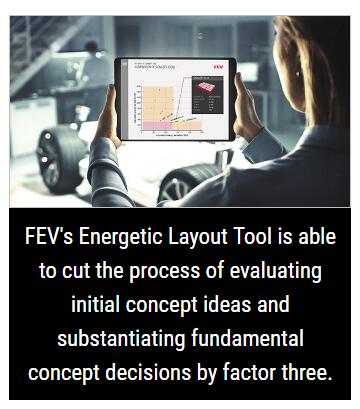Welcome to Sino Bearings web
24x7 HOTLINE:+86-28-81454188

 NEWS
NEWS
In the development of battery electric vehicles, energy storage systems are crucial. With its Energetic Layout Tool, engineering service provider FEV now offers a solution that can generate virtual battery packs quickly and easily. Focused on automation, the tool can design and compare a large number of concepts with little effort for significantly reduced development costs. This makes it possible to evaluate initial concept ideas and substantiate fundamental concept decisions in just two weeks.
Although spreadsheet programs are often used in the design of batteries and the extrapolation to the cell and module level, these methods quickly reach their limits due to the large number of factors to be considered and ever increasing project complexity.
Taking into account highest quality requirements, the Energetic Layout Tool makes FEV's engineering process for high-voltage battery systems particularly efficient, because only basic requirements need to be entered – such as voltage limits, capacity, weight, dimensions, or performance.
In conjunction with a previous cell selection and a few design parameters, such as the distance between neighboring cells and the spatial layout, the tool initially generates feasible virtual battery module layouts. Taking into account additional design specifications, complete virtual battery packs can then be created. The tool calculates critical characteristics of the respective concept at each stage; such as the dimensions, gravimetric and volumetric energy density, electrical power and more.
"With the Energetic Layout Tool, we are able to calculate, design and compare a wide range of different concepts for our customers," said Dr. Michael Stapelbroek, Vice President of Electronics & Electrification at FEV. "The pressure in these kind of development projects is often considerable. In addition to significant time-saving benefits – up to factor three – due to the high degree of automation, our tool can also notably reduce development costs."
Within the tool, battery packs, modules and cells can be displayed in a 3D plot and compared with the packaging space available in a given vehicle. High-level requirements can be defined and automatically analyzed against the characteristics of the virtual battery packs. Results are then generated as a presentation at the touch of a button for easy reporting.
Another compelling feature of the Energetic Layout Tool is that it takes a comprehensive and holistic view of the battery. A variety of battery cells – typically 15 to 25 – with different formats (round cell, prismatic, pouch bag) are being considered. And not only is an electrical or a geometric design generated, but both designs are available simultaneously. This avoids surprises later due to one criterion excluding the other, which could add to costly delays.
Yet another advantage for customers is the coupling of the Energetic Layout Tool with FEV’s comprehensive cell database. The database is regularly updated and contains information from well over 1,000 battery cells with different chemistries and designs. It also contains layout information for a wide range of applications. This ensures that the Energetic Layout Tool always produces the best possible solution, ensuring favorable outcomes for FEV’s customers.